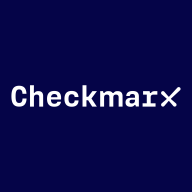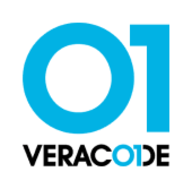

Veracode and Checkmarx One compete in the application security testing category. Veracode takes the lead with its ease of use and deep integration capabilities, making it a preferred choice for seamless integration into development environments.
Features: Veracode offers comprehensive static and dynamic scanning capabilities, including SAST, DAST, and manual scans, providing extensive vulnerability assessments. It integrates well with various development environments, enhancing its usability. Checkmarx One allows scanning of uncompiled code, supports custom rules, and covers a wide range of languages, catering to organizations needing extensive customization.
Room for Improvement: Veracode could improve in reducing false positives, enhancing API integrations, and expanding language support. The UI could be more intuitive. Users also seek better reporting features. Checkmarx One should address DAST and API security capabilities and improve emerging language support. Its licensing model needs flexibility and UI simplification.
Ease of Deployment and Customer Service: Veracode functions efficiently across public, private, and hybrid clouds and supports SaaS models, lowering infrastructure needs while providing responsive customer support despite occasional delays. Checkmarx One is extending its capability into cloud deployments, with strong customer and technical support focusing on proactive solutions.
Pricing and ROI: Veracode is considered costly, particularly for smaller entities, but offers justified security value and feature benefits, reflecting in reduced security issues and compliance gains. Checkmarx One, though more expensive than some peers, provides a favorable total cost of ownership due to comprehensive security offerings, yielding a promising return on investment with enhanced security practices.
They are very responsive and quick to help with queries within our scope.
Veracode can improve the licensing model as it is a bit confusing.
The pricing and model align with the needs of the developer community and the cybersecurity office.
It offers confidence by preventing exposure to vulnerabilities and helps ensure that we are not deploying vulnerable code into production.


Checkmarx One is an enterprise cloud-native application security platform focused on providing cross-tool, correlated results to help AppSec and developer teams prioritize where to focus time and resources.
Checkmarx One offers comprehensive application scanning across the SDLC:
Checkmarx One provides everything you need to secure application development from the first line of code through deployment and runtime in the cloud. With an ever-evolving set of AppSec engines, correlation and prioritization features, and AI capabilities, Checkmarx One helps consolidate expanding lists of AppSec tools and make better sense of results. Its capabilities are designed to provide an improved developer experience to build trust with development teams and ensure the success of your AppSec program investment.
Veracode is a leading provider of application security solutions, offering tools to identify, mitigate, and prevent vulnerabilities across the software development lifecycle. Its cloud-based platform integrates security into DevOps workflows, helping organizations ensure that their code remains secure and compliant with industry standards.
Veracode supports multiple application security testing types, including static analysis (SAST), dynamic analysis (DAST), software composition analysis (SCA), and manual penetration testing. These tools are designed to help developers detect vulnerabilities early in development while maintaining speed in deployment. Veracode also emphasizes scalability, offering features for enterprises that manage a large number of applications across different teams. Its robust reporting and analytics capabilities allow organizations to continuously monitor their security posture and track progress toward remediation.
What are the key features of Veracode?
What benefits should users consider in Veracode reviews?
Veracode is widely adopted in industries like finance, healthcare, and government, where compliance and security are critical. It helps these organizations maintain strict security standards while enabling rapid development through its integration with Agile and DevOps methodologies.
Veracode helps businesses secure their applications efficiently, ensuring they can deliver safe and compliant software at scale.
We monitor all Application Security Tools reviews to prevent fraudulent reviews and keep review quality high. We do not post reviews by company employees or direct competitors. We validate each review for authenticity via cross-reference with LinkedIn, and personal follow-up with the reviewer when necessary.